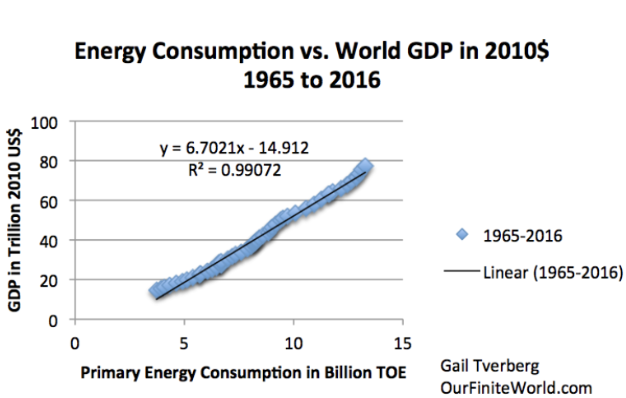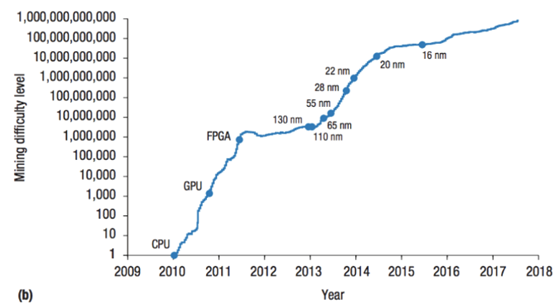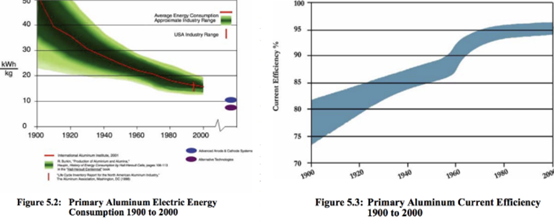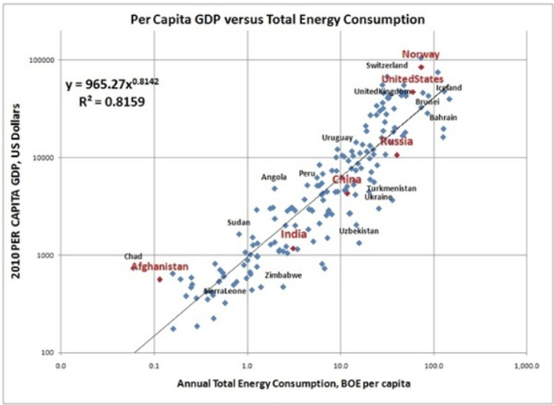PoW is efficient and saves the world $100 billion annually!
For most people, Bitcoin's PoW algorithm is a waste of resources. In this article, I will explain the views of everything, such as money, the subjectivity of energy use, and the impact of PoW energy consumption on existing governance systems. This article has collected the opinions of many cryptographers, and I have integrated and refined all the comments.
Work is energy
The concept of “work”, the kinetic energy, begins with the French mathematician Gaspard-Gustave de Coriolis, who believes that energy is “already produced” . A long time ago, the work in the economic field came from manpower, from food to work.
About a million years ago, humans stumbled upon the fire. So the energy we get is increased, not only can we get energy from the food to keep warm, but also can be heated by the fire. The use of energy has increased and human life has improved.
- Asia blockchain development adds new power! Singapore International Blockchain Center was established
- Can Bitcoin hold the $10,000 mark?
- On the currency fee, circulation fee, market-making fee, a failed IEO project also costs so much money.
About a few thousand years ago, we began to domesticate animals and the energy use rate was further increased. Animals replace human labor, and these animals also need energy. The need to expand a large amount of food to meet the energy needs of people and livestock, so the society is further prosperous.
Time has been pulled over hundreds of years ago and humans have created machines. These machines can extract energy from natural resources such as wind and water, and then mine cheap coal and natural gas, which is now nuclear energy (a lot of energy is produced through fission and fusion). All machines and natural production work require energy. The human economy is not only built on money, but also on work and energy.
Our lives are closely related to energy prices. Energy is needed for water purification, transportation, and manufacturing. Refrigerators and freezers, including cooking food and storing food, are inseparable from energy. In the free market, the energy consumed by any commodity is reflected in its price. Free markets will also compress the energy consumed by commodities because competition will drive down commodity prices. The form of labor required for service can also be seen as stored energy. 
Comparison of World GDP and World Energy Consumption in 2010 (from the US Department of Agriculture)
At the beginning of the 20th century, industry leaders like Henry Ford and Thomas Edison liked to replace gold or dollars with “energy dollars” or “energy units” (commodity/energy currencies). Commodity currency is popular because it has sound monetary characteristics, such as: clear unit of account, easy to measure and difficult to forge, easy to split and replaceable (equivalent between the currency of the unit). However, energy currencies have fatal flaws – difficult to transmit or store.
"To arouse a person's desire, just keep scarcity" – Mark Twain
Time flies to October 31, 2008, when Ben Cong has released a Bitcoin white paper. The original Bitcoin PoW algorithm was designed to prevent spam and was later used by Nakamoto as a consensus algorithm for digital cash. Behind the PoW mining is the conversion of electrical energy into bitcoin (block rewards) using dedicated equipment (ASIC). The ASIC machine repeatedly performs a hash operation (guessing random numbers or voting) until it calculates a password puzzle answer and gets bitcoin. The calculated answer proves that the miners have invested in ASIC and electric energy, which consumes a certain amount of work. Bitcoin has a capital-based voting mechanism that “puts money, gets votes” , consumes energy or buys ASIC devices to calculate hashes (votes).
When Satoshi Nakamoto designed the PoW, he fundamentally changed the human consensus from a political vote to a non-political vote (calculation of hashing) through energy conversion. PoW is a proof of energy consumption and is one of the simplest and fairest proof methods in the virtual world. Bitcoin is a super commodity that is mined by the consumption of energy. So PoW converts electricity into digital gold.
It is only costly to ensure the non-tamperable nature of Bitcoin books. PoW is "expensive", which is a property of it, not a bug . Until modern times, people still use a thick wall to protect property, and there is no physical wall in the cryptocurrency to protect funds, no door to access the vault. The public account book of Bitcoin is protected by hash computing: a wall is built with all the power. Although bitcoin costs a lot of computing power, launching an attack requires such a huge amount of computing power.
Energy consumption
The end of encryption is coming, Bitcoin's PoW mechanism is about to destroy the world in 2020! Most of the "doomsday" articles are from the analysis of Alex De Vries, a "financial economist and blockchain expert" from PWC Netherlands, the Netherlands. It is also the signing author of the Digicocomist website. He has been criticized for his erroneous energy calculations. The KPI used by Fries is intentionally misleading: the KPI is considered to be “the power consumption per transaction”, and the reasons for the opposition are as follows:
· According to each block, the power consumption is not appropriate. Each block accommodates different transaction volumes. One block accommodates more transactions but does not consume more power.
· The economic density of Bitcoin transactions has been rising (batch calculations, segregation witnesses, lightning networks, etc.). As Bitcoin becomes an increasingly large settlement network, the economic value of unit energy will increase exponentially.
· Average transaction costs do not fully measure Bitcoin PoW efficiency, and efficiency should be defined based on the security of Bitcoin economic history. Energy consumption guarantees the stability of Bitcoin stocks, and as the inflation rate declines, the proportion of stocks also declines. Researcher LaurentMT has empirically found that Bitcoin's PoW mechanism has become more efficient over time: the value-added portion of the Bitcoin system has offset the ever-increasing costs.
Now that you understand the correct KPI definition for energy return, take a look at the power cost trend of Bitcoin PoW.
The efficiency of ASICs is slowing down, and it is expected that competition among manufacturers will intensify as profit margins narrow.

Source: https://cseweb.ucsd.edu/~mbtaylor/papers/Taylor_Bitcoin_IEEE_Computer_2017.pdf

Source: https://research.bloomberg.com/pub/res/d3bgbon7nESTWTzC1U9PNCxDVfQ
The overall mining cost will shift from ASIC hardware cost (capex) to a continuously increasing computing cost (referred to as opex). Because the location of the mining center does not affect the Bitcoin network, the miners are looking for places with a large surplus of electricity to reduce the marginal cost of mining. In the long run, it is possible to generate an efficient global energy market. Bitcoin miners look for power spreads from major power centers, thereby reducing the cost of bitcoin's overall mining. This may solve the problem of the waste of renewable energy, such as water and natural gas. In the future, bitcoin mining can use renewable energy, and energy suppliers power miners and convert excess electricity into bitcoin.
Aluminum is a popular “export” way of electricity in countries with rich renewable energy sources such as Iceland. Smelting bauxite (also known as aluminum ore) requires a lot of energy, and converting bauxite to aluminum is a one-way function (just like calculating a hash). Nearly 40 years ago (1979), people also had the same concerns about “unfair” energy consumption of aluminum (including centralization concerns). All aluminum products companies are constantly looking for cheap energy and various preferential resources on a global scale. The aluminum manufacturing industry has become more mature in the past decade, and the production efficiency of aluminum kilograms per watt hour has also been greatly improved.

Source: https://www1.eere.energy.gov/manufacturing/resources/aluminum/pdfs/al_theoretical.pdf
“This global energy network turns stranded assets into new assets. Imagine a global 3D topographic map, low energy hotspots, and high electricity costs in other regions. Bitcoin mining is like pouring a glass of water on this 3D terrain. On the picture, the water flows into the low-lying corners, and the water level is flattened."
Bitcoin's PoW miners are the ultimate buyers of surplus power, creating a new incentive layer that encourages new energy producers to sell the remaining energy and make the excess energy available.
“When does the energy demanded by PoW stop growing?” It is precisely the kWh of PoW consumption = the marginal return sold to the grid when there are enough energy producers to participate in the PoW, that is, when the PoW premium drops to zero. I call this balance point "the central point." I think that when it reaches the "central point", PoW will consume 1% to 10% of the world's energy. ”
Some people pessimistically believe that bitcoin mining cannot produce something that makes sense, such as looking for prime numbers. Although it is advisable to introduce a second level of reward for mining, it also introduces security risks. Reward cuts will cause "the secondary function's return is higher than the main function." Even if the secondary function does not cause adverse effects (such as heaters), it is not expected to be $100 per hash, but instead translates to 100+5 dollars per ha. hope. Mining heaters increase as hardware efficiency increases, resulting in increased difficulty and increased energy usage. Fortunately, Bitcoin does not have this problem, it is protected by the pure PoW algorithm.
Note: Bitcoin contributes a lot to society (if there is no incentive mechanism, no one is willing to mine), and it is unreasonable to require miners to simply perform altruistic services.
Related costs
Everything needs energy (the first law of thermodynamics). It is a very subjective idea to think that the use of one type of energy is more meaningful or wasteful than another, because each buys and uses energy from the energy market.
“If people think that the value of electricity is spent, then there is no waste. Those who consume electricity will also get Bitcoin rewards.” — Saifedean Ammous
In thermodynamics, the universe is essentially a closed system. The excess power consumed by Bitcoin is much less than the electricity consumed by the existing French currency system. The existing legal currency system not only consumes electricity, but also involves banking infrastructure, as well as military and political mechanisms. The use of electricity to safeguard the pillars of the financial system is a “net positive” effect. Below I will make a rough comparison of the existing financial, military and political systems.

Type I civilization
In the process of finding cheap energy, we will release a larger economic surplus in the real world. Using these new cheap energy sources, Bitcoin not only pushes the society to Kadeshev's Type I economy, but may further translate into Kadeshev Type I energy civilization (our current Kadeshev index is about 0.72) . With Bitcoin mining incentives, our time to reach a T1 energy civil society may be reduced from 200 years to under a few decades. After reaching the I-type society, it is not necessary to limit the growth rate of energy consumption, because the increase in energy consumption can improve the living standard of everyone.

The pressure to find cheap energy will speed up the construction of nuclear reactors. It is estimated that in the next few decades, it will cost $80 billion in research costs to solve the nuclear fusion problem. The main fuel for nuclear fusion comes from the ocean, and the seabed may contain the energy supply of mankind for hundreds of years to come. Nuclear energy has many advantages in renewable resources, such as providing long-term energy supply and not releasing greenhouse gases (no air pollution). Nuclear energy can generate a lot of electricity and continuously transport electricity. In addition, nuclear energy is not affected by scale uneconomical (Note: when the scale is not economical, the long-term average cost increases when the scale of production increases). When applying water and wind energy, it is necessary to choose an excellent position, and the generator must be placed in a sub-optimal position, and the production cost rises. Nuclear energy raw materials are abundant (distributed in the ocean) and have a wide distribution range. Even if a large number of nuclear power plants are built, the production cost will not increase too much.
Nuclear energy and other cheaper sources of energy will solve major problems facing humanity, such as shortages of fresh water. We are surrounded by sea water, but the seawater desalination station that removes salt from the sea requires a lot of energy. At present, the cost of desalination is higher than freshwater, groundwater, water recycling and water conservation.
The willingness of human exploration since ancient times, from the mountains to the sea floor, to the nucleus, to the structure of time and space: human growth will not be trapped in energy shortages.
Financial institutions spend $134 billion on the settlement of transactions each year , allowing Bitcoin's blockchain to be automatically settled . Is it a wise choice if you only invest $4.5 billion in mining costs ? I think the answer is yes.
Original: https://medium.com/@danhedl/pow-is-efficient-aa3d442754d3
Source: https://first.vip/shareNews?id=1950&uid=1
We will continue to update Blocking; if you have any questions or suggestions, please contact us!
Was this article helpful?
93 out of 132 found this helpful
Related articles
- QKL123 market analysis | Ethereum can rise again, DeFi or can give an answer (0912)
- China's SAFE tells you the future direction of Bitcoin
- The origin of the history of capacity certification (PoC): Burstcoin
- Let the girl in the rice circle enter the coin circle
- Launching Shuttle, a cross-chain asset exchange tool, to help digital asset transitions than the original chain
- MasterCard and R3 develop blockchain cross-border payment platform to solve cross-border payment pain points
- Re-examine the investment value of hard currency bitcoin in the era of negative interest rates






